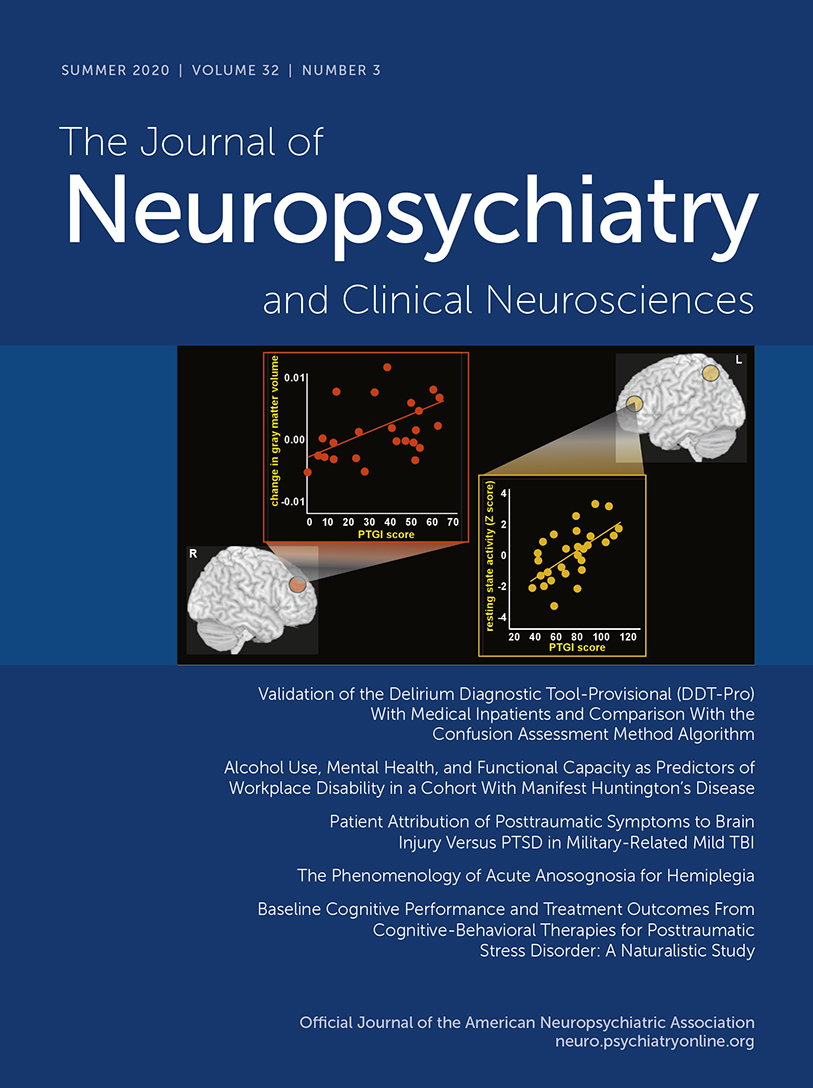Alcohol Use, Mental Health, and Functional Capacity as Predictors of Workplace Disability in a Cohort With Manifest Huntington’s Disease
Abstract
Objective:
Huntington’s disease (HD) is an inherited neurodegenerative disease involving motor, cognitive, psychiatric, and behavioral impairments that eventually affect work-role functioning. There is limited research regarding predictors of workplace disability in HD. The authors examined predictors of work impairment and disability in a cross-sectional cohort of employed persons with symptomatic HD participating in the worldwide Enroll-HD study.
Methods:
The study sample (N=316) comprised individuals with manifest HD and a CAG repeat length range between 39 and 60 and were currently engaged in paid full- or part-time employment. Univariate and multivariate logistic regression analyses identified predictors and the effect of all predictors in a fully adjusted model.
Results:
Of the sample, 20.3% reported missing work due to HD, 60.1% reported experiencing impairment while working due to HD, 79.1% reported having work-related activity impairment due to HD, and 60.8% reported impairment in overall work productivity due to HD. Individuals had 25% higher odds of missing work time if they had a higher level of functional impairment (odds ratio=0.76, 95% CI=0.64, 0.91) and had three times greater odds of missing work if they were current alcohol drinkers, compared with nondrinkers (odds ratio=2.86, 95% CI=1.62, 5.03). Individuals with lower self-perceived mental health were also 5% more likely to experience impairment at work due to HD. Motor impairment was not a strong predictor of workplace disability.
Conclusions:
These findings provide important new knowledge that can inform the development of strategies or targeted intervention trials to support persons with symptomatic HD to maintain their work roles.



